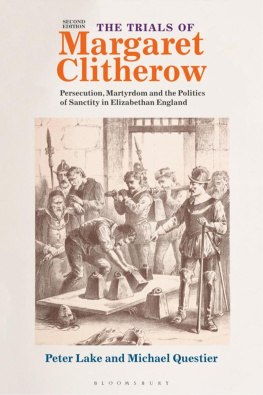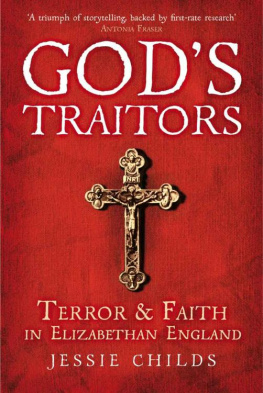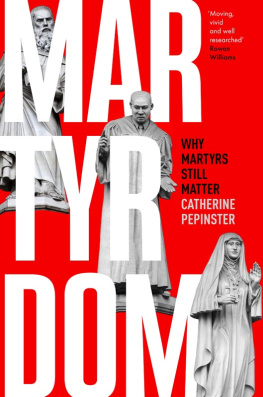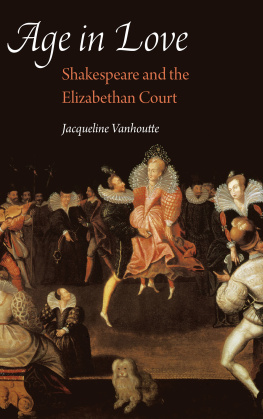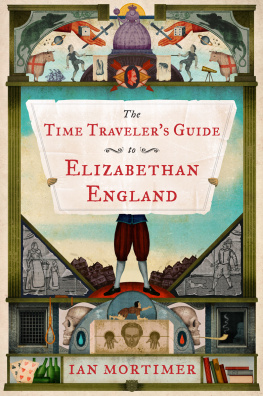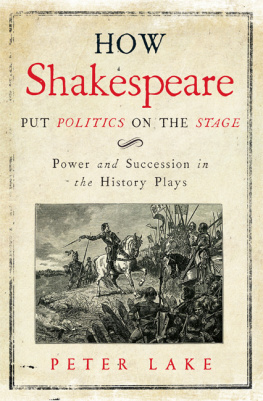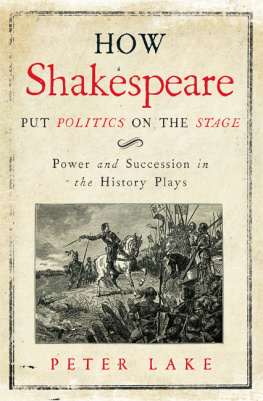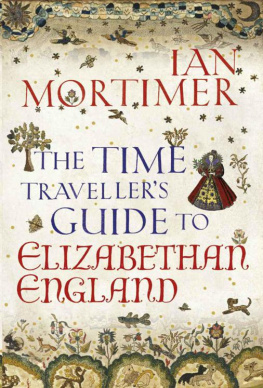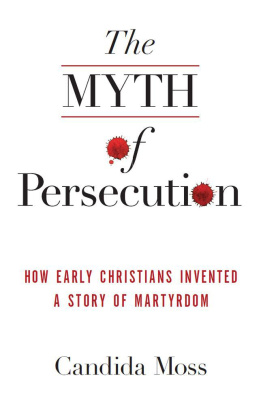The Trials of
Margaret Clitherow
The Trials of
Margaret Clitherow
Persecution, Martyrdom
and the Politics of Sanctity in
Elizabethan England
Second Edition
Peter Lake and Michael Questier
Exterior of the dwelling in the Shambles, York, formerly identified as the house of the Clitherow family.
Interior of the dwelling in the Shambles, York.
Portrait of Robert Persons, SJ.
Portrait of Henry Hastings, third earl of Huntingdon.
Portrait of Tobias Matthew, dean of Durham and later archbishop of York.
Portrait of Matthew Hutton, dean and bishop of Durham and subsequently archbishop of York.
Portrait of Francis Ingleby.
The persecution of English Catholics.
Portrait of John Clench, justice of queens bench.
The Huntingdon room in the Kings Manor where meetings of the council in the North were held.
The Guildhall, York.
The execution of Margaret Clitherow.
Title page of John Mushs True Report of the Life and Martyrdom of Mrs Margaret Clitherow.
The execution of Mary, queen of Scots.
Title page of An Answere to a Comfortable Advertisment.
Penultimate page of An Answere to a Comfortable Advertisment.
Portrait of William, Cardinal Allen.
Title page of Copie of an Information.
Henry Garnet, SJ.
Title page of Henry Garnet, SJ, An Apology against the Defence of Schisme.
Henry Garnet, SJ, A Treatise of Christian Renunciation.
Number 10 of the Painted Life of Mary Ward.
Number 20 of the Painted Life of Mary Ward.
A number of years ago, the authors of this volume, for rather different reasons, became interested in the famous martyr Margaret Clitherow of York, who was pressed to death on 25 March 1586 for refusing to plead when she was charged with the crime of harbouring Catholic seminarist clergy. We are grateful to the editors of Past and Present for allowing us to draw on some of the material in an article which appeared in that journal in 2004 under the title Margaret Clitherow, Catholic Nonconformity, Martyrology and the Politics of Religious Change in Elizabethan England. We would also like to thank those who have read and commented on part or all of the text, notably Caroline Bowden, Gerard Boylan, Pauline Croft, Ginevra Crosignani, Claire Cross, Simon Healy, Julie Hirst, James Kelly, Christina Kenworthy-Browne, CJ, Gerard Kilroy, Nicholas Schofield, William Sheils, Caroline Watkinson and Rivkah Zim. We are indebted to Sir Thomas Ingilby of Ripley Castle, North Yorkshire, for permission to reproduce the portrait of his sixteenth-century relative, the priest Francis Ingleby. Michael Questier is grateful to the warden and fellows of All Souls College, Oxford, for a visiting fellowship in Michaelmas 2007, during which term some of the research for this volume was completed. The second edition of this book has been produced with the generous assistance of a grant from Isobel Thornleys Bequest to the University of London.
For various reasons, the authors of this volume decided back in the early 1990s that it was worth writing an article about the pearl of York, Margaret Clitherow, even though their opinions about the topic of Mrs Clitherow, and indeed the entire subject of post-Reformation religion, were at many points frankly incompatible. They could agree, however, that it was possible to read the principal sources for the story mainly Mrs Clitherows chaplain John Mushs account of her godly life and her excruciating martyrdom against the grain in order to locate the story within a series of wider political contexts and narratives: familial, local and national. In particular the authors were just about able to concur that, despite their differences about the place of Mrs Clitherow inside the Roman Catholic pantheon, it was worth flagging up issues of gender relations, and also that it was possible to rescue Mrs Clitherow from the feminist accounts which had reduced her to a mere instrument, even a victim, of a style of religious politics which was played by men and particularly by Roman Catholic priests who had trained in the seminaries on the Continent. The article said what the authors wanted to say on those topics and, as they thought, they pushed the existing sources as far as seemed possible at the time. What then prompted them to write a book on the subject was an exercise in archival retrieval and record linkage which, to their own satisfaction, they managed to carry out on other sources that were clearly at the centre of this gruesome tale. One of those sources was a manuscript treatise on church popery, as it is sometimes called. The historian of Elizabethan Catholicism, Peter Holmes, had found and identified it as a major source on the attitudes of contemporary Catholics concerning the issue of how far they should conform and comply when faced with demands made by the State concerning their practice of religion. This was a source which was subsequently used by Alexandra Walsham in her study of church papists. Reading that manuscript again, and asking who might have written it and why, it seemed logical to conclude that its violent, even vitriolic, attack on those who argued for conformity to the State Church, and in particular its seething critique of a priest called Thomas Bell, came out of the circle around Margaret Clitherow. Indeed, the authors of this volume concluded that it must have been written by none other than John Mush himself. Mushs deeply moving biographical account of Mrs Clitherow was itself an attempt to persuade contemporary Catholics that they should not give in to the arguments that it was acceptable, under certain circumstances, to obey the act of uniformity which decreed that all the queens subjects should attend divine service in their parish churches. The crown of martyrdom conferred on Mrs Clitherow was also an endorsement of recusancy.
This material made it possible to link Mrs Clitherows story with the debates about recusancy which continued after 1586 and ended up with Mush, Bell and the Jesuit Henry Garnet slugging it out, in manuscript and print, during the early 1590s, as they sought to persuade their Catholic audience of the rightness of their casuistical arguments on this subject. This supplied the material for the second half of the book about Clitherow, even though she had already passed to her reward in March 1586.
Our desire to produce a revised second edition was prompted by the location of other archival materials which we believe are directly related to the topic. First and foremost, we have a nuns chronicle which narrates, inter alia, the fate of Ann Foster of York. Her story prefigures many of the central characteristics of the death of Mrs Clitherow. It allowed us to be more assertive about the role of female resistance to aspects of the sixteenth-century Reformation, certainly in the North of England. It confirmed our opinion that the only reason that this issue had not been taken more seriously in the historiography of the subject was because of the patchy survival of records of this kind. It confirmed our view that Clitherows story might be set in a wider context provided by the intersection between gender relations and religious identity formation and confessional conflict. Indeed, thinking about the Foster material led us to re-evaluate a body of sources, reprinted in the nineteenth century by the great Jesuit historians Henry Foley and John Morris, which came from the North of England. As far as we could see, no one had really thought very much about their provenance. But, on reflection, it seemed clear enough that these potted stories of Catholic zeal in the face of persecution had been solicited by Henry Garnet and had been sent abroad at the time when different sides in the English Catholic community were trying to put their respective cases on the question of church popery. These stories had been gathered together by the Jesuit scholar Christopher Grene. Most of his work takes the form of stripped-down details of this or that aspect of Catholic life and suffering recorded in his books of transcripts. But one of his volumes of material on the travails of Catholics in England is retained in Rome in the archives of the English College there. Here one can see a selection of the original materials on which Grene worked. They described events as far back as the 1570s but, it seems, were solicited by Garnet because they demonstrated that only hard-line recusancy was an appropriate mode of behaviour for a good Catholic when faced with the malice of the queens officers who were determined to use the statute-based law on conformity to destroy the faith. These stories were gathered together in order to form a coherent account of Catholic resistance in the North, organized around the trope of Catholic separatism. They put the sufferings of high-profile recalcitrant recusants alongside the more spectacular martyrdoms on the scaffold of seminary priests and, of course, of Mrs Clitherow herself, put to death in an appallingly cruel way because she refused to comply with the legal procedures which were deployed to indict and convict her, and people such as her, of receiving seminary clergy into their houses.


